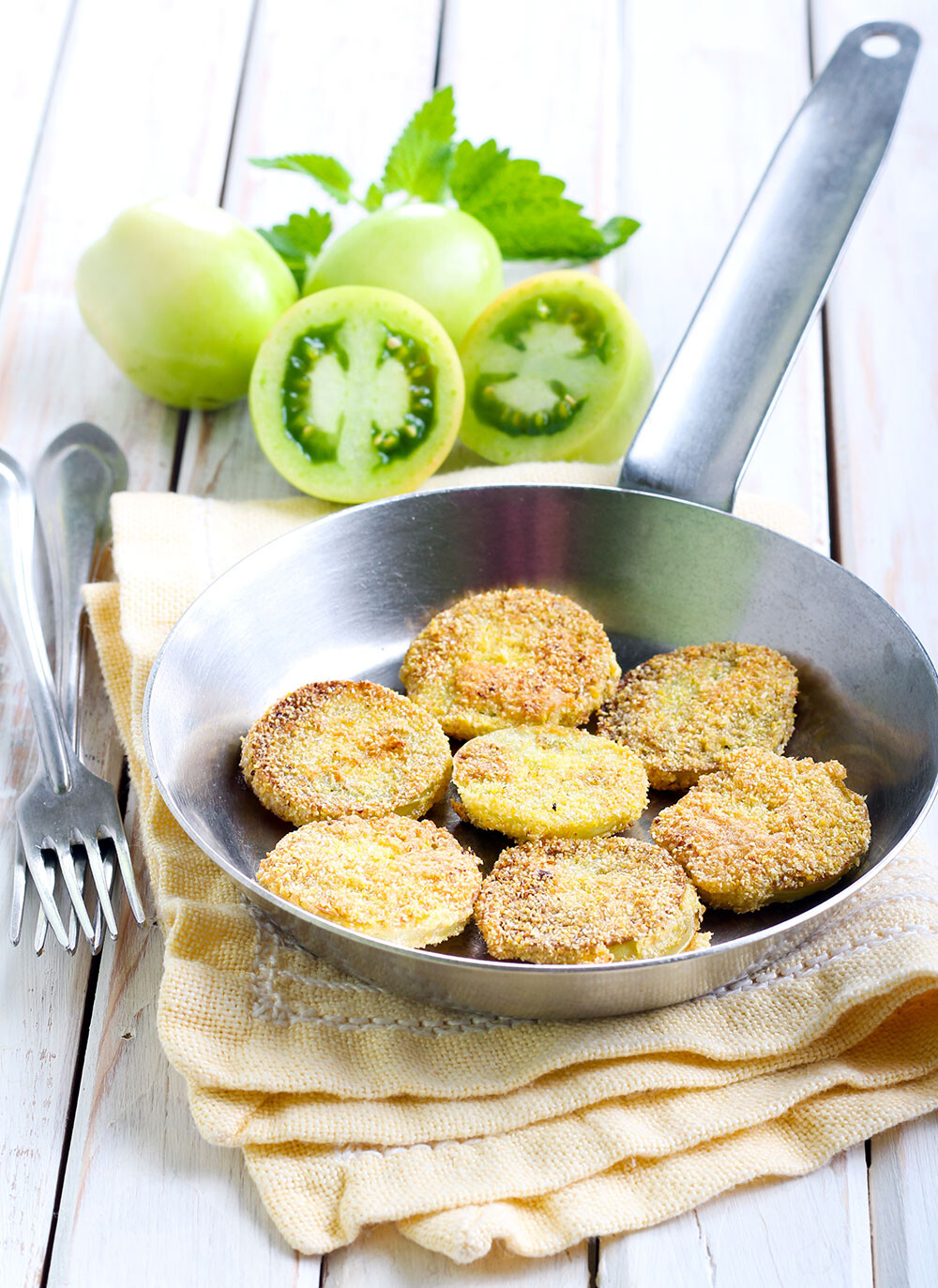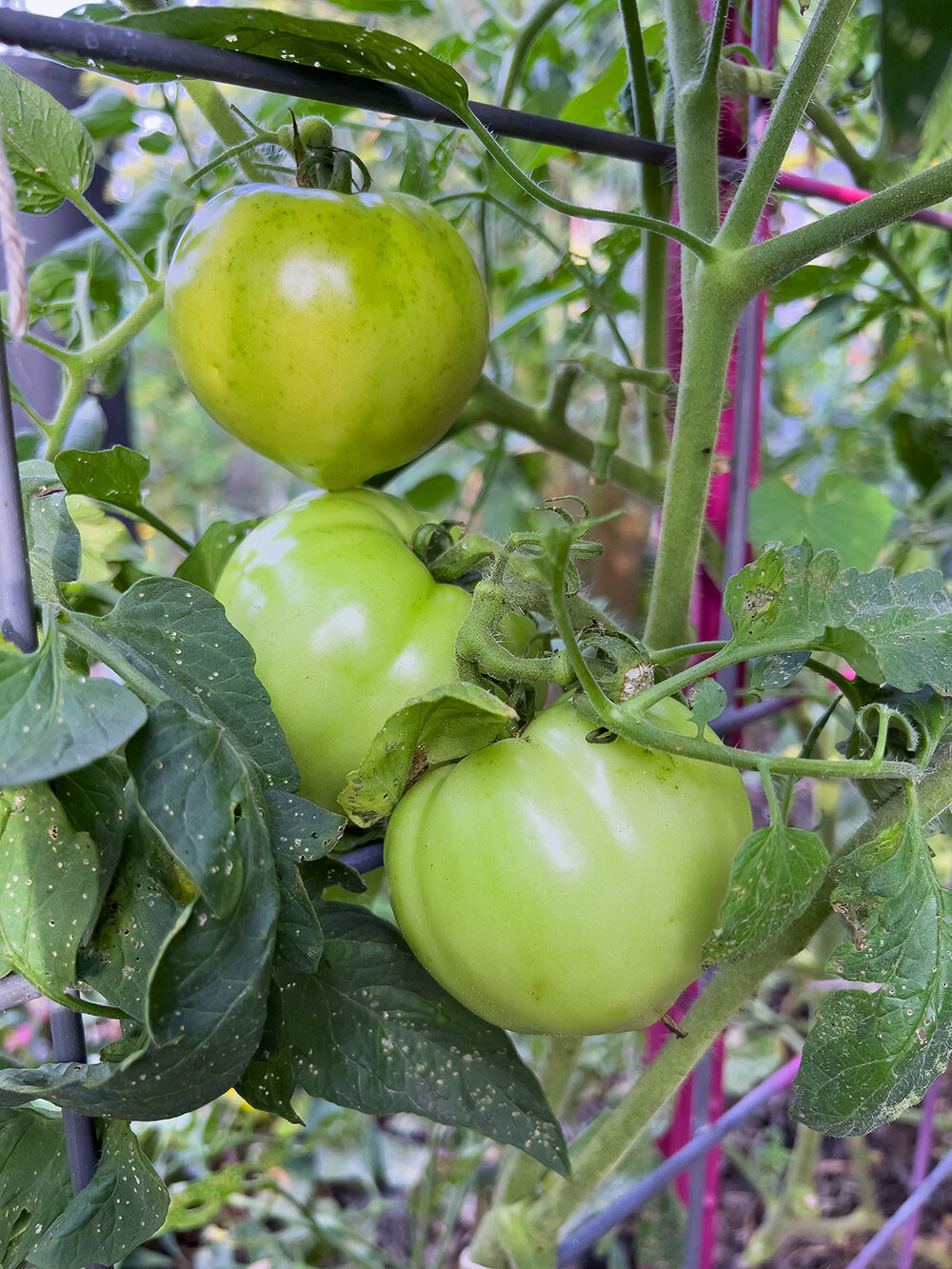It’s October. Do you know where your tomatoes are?
Obviously most tomatoes continuing to mature in what is left of this year’s growing season are still on the vine in the veggie patch. But cold weather will be coming soon, and with many fruits in varying stages of unripe green, it would be a shame for an early visit from Jack Frost to put the last bite on them.
To prevent Ol’ Jack from turning your remaining tomatoes to yuck, consider ripening them indoors. Yep, I said indoors, and it is very easy to do.
How easy? It can be as simple as pulling up entire plants that still have green tomatoes and dangling them upside down on strings in a dry, cool (ideally between 65 and 75 degrees) spot, such as a basement, shed, or garage, where the fruits will slowly ripen. However, with apologies to Clint Eastwood, the one problem with this “hang ’em high” method is that ripened fruit can easily fall off spent plants and onto the floor. Splat!
To reduce the splat factor, try an alternate plan of action: Simply pull immature tomatoes off vines and bring them inside to finish their transition from green to ripe red. Pick fruit that are free from splits, dings, or insect damage, and put them on trays in single layers in a location where temperatures hover, again, around 65 to 75 degrees.
Don’t pay any attention to the old yarn that tomatoes need to bask their days away in the sun to ripen. No, in fact, it is better to keep the fruits out of direct sunlight to prevent the bright rays from turning outer skins red before the insides fully ripen. In short, it is temperature — not sunlight — that puts things in motion indoors to properly mature a ’mater.
You can even fine-tune this storage method by wrapping each tomato in a piece of tissue or newspaper. This extra step has two advantages: (1) It prevents rotting tomatoes from spreading their plague to healthy fruits; and (2) such a wrap traps ethylene gas, which tomatoes naturally emit to help them ripen.
Storing tomatoes in temperatures that settle more into the 60s will slow the ripening process down to a point that, as I have found out more than a few times, can even s-t-r-e-t-c-h your supply of tasty, garden-grown tomatoes until the end of the year.

Try fried green tomatoes, a culinary delight.
Why wait for all of your unripe tomatoes to mature when you can enjoy some now by indulging in a culinary delight known as fried green tomatoes? Thinly slice (1/4 inch or less) two to three green tomatoes, dip in a beaten egg, dredge in flour, bread crumbs, panko, or cornmeal, and add a flick or two of salt or pepper to taste. Cook on medium in a preheated pan dashed with vegetable oil for about three minutes on each side — basically, until they are a scrumptious golden brown. This is the basic recipe, so don’t be shy about experimenting by adding extra yummy via garlic powder, Old Bay, sriracha powder, onion salt, or Creole seasoning. I could go on, but I’m getting hungry!
To Do in the Garden
October
- Even as the harvest is wrapping up in the ’mater patch, there is still time early this month to plant such hardy cool-season veggies as Chinese cabbage, onions (bulbs), garlic, leaf lettuce (transplants), and spinach.
- Pansies! October is a prime planting month for these persistent winter pretties. Scratching in a little time-release fertilizer after your pansies are planted will help boost their flower power through the coldest months, as will dead-heading blooms when they begin to fade.
- Before herbaceous perennials die back or are pruned down at the end of the growing season, set markers beside them so they won’t be accidentally dug up during next spring’s planting frenzy.
- Pets on Parade 2024
- At Home with Amanda
- Your Happiest Place
- Making a Meal of Pet Nutrition
- Restaurant Profile: The Library Steakhouse
- Garden Adventurer: Save Those Tomatoes!
- Liquid Assets: A.P.P.Y.
- Liquid Assets: Periscope Sunrise
- Erica Chats: Go Ahead and Spoil Them!
- Small Business Spotlight: MOSA Pet Spa & Boutique
- On Trend: Bathroom Remodels
- Nonprofit Spotlight: Habitat for Humanity of Wake County
- Things to Do: October 2024






